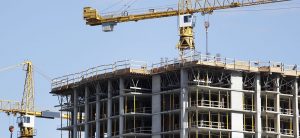- OUR APPROACH
-
COMMITTED TO YOUR SUCCESS
Our approach, developed over decades of experience, is fine-tuned to get the results you want.
We deliver concept-to-completion solutions, designed by temporary power specialists with access to the largest inventory of high-quality power generation and distribution equipment in North America.
-
- Equipment
-
RENTALS
From a wide range of diesel and natural gas generators to transformers, cable, light towers and more, our large rental fleet and extensive vendor network ensure we’ll have the temporary power equipment that your project requires — every time.

-
- Industries
-
INDUSTRIES WE SERVE
For nearly 20 years, we have been at work powering projects across Canada’s industrial sectors.
Select from this sampling of industries to learn how we can put our expertise to work for you.
VIEW ALL- Projects
- About
-
A PROUD HISTORY. A BRIGHT FUTURE.
From our inception in 1998, we have been building our team on a foundation of excellence. Our team members’ passion, expertise and commitment are what have allowed us to grow into a national company with projects across Canada.
Click on the links to learn more about our history, our team or our career opportunities.
- Blog
- Contact
-
When Nicholas Gust, owner of Abbotsford’s West Coast Placer, was doing a drone survey of a placer gold property this past July, he didn’t expect to have his work delayed by an eagle. “I had an eagle chasing the drone, and it was closing in on it,” recalls Gust, laughing. “The drone I have was bigger than the eagle. I was surprised.”
These stories are likely to become more commonplace as small UAVs (sUAVs) become more ubiquitous in all stages of mining in BC -from exploration to mine site management. Canadian Engineering giant, Golder Associates, currently operates a UAV programme with applications in mining and oil and gas, among others. One of the talks at 2015’s Minerals North conference in Mackenzie was titled, “UAV in Data Collection”
Last fall, in the wake of the Mt. Polley tailings breach, drones were there, helping to get a grasp on the scope of the damage. “The benefit there is you can get rapid imagery of a disaster and produce the data very quickly, within the same day,” explains Gust, whose friend conducted some of the sUAV surveying, “And you can see the extent -you can even map it in 3D.”
 West Coast Placer largely uses its drone, a fixed wing UAV that weighs only 500g, for mineral exploration. They use the sUAV to gather aerial images, and to create 3D models and topographic maps of new exploration areas. Traditionally done using costly helicopters and airplanes, this is a step that many smaller mining properties often skip because of the high cost (according to Gust, this kind of aerial survey begins at $15,000 for a small property, plus around $4,000 for processing).
West Coast Placer largely uses its drone, a fixed wing UAV that weighs only 500g, for mineral exploration. They use the sUAV to gather aerial images, and to create 3D models and topographic maps of new exploration areas. Traditionally done using costly helicopters and airplanes, this is a step that many smaller mining properties often skip because of the high cost (according to Gust, this kind of aerial survey begins at $15,000 for a small property, plus around $4,000 for processing).
But with the economic realities facing the mining industry right now, aerial surveying is a step that mining properties can’t afford to skip. And drones are making it possible for a fraction of the cost -Gust puts an estimate in the $2000 range.
Exploration is only one stage in the mining process where drones can be useful. Inspecting pit walls, creating 3D imagery for use in mine site development and surveying ore piles and mine pits are some other tasks that are being performed by sUAVs. Typically, ore pile surveys are done from the ground, but Gust explains, “Drones are able to do this a lot quicker, and almost to the same accuracy, without having people climbing over the piles. And you can do it multiple times per year: estimate volumes of ore you’ve moved, that sort of thing.”
Reclamation is another area where drones are proving useful. Gust recalls a job he did this summer, producing before and after aerial photographs of a reclamation area for a coal mine.
Although the use of sUAVs is in its infancy, it is growing quickly, with laws, mining companies and other technologies scampering to keep up.
Transport Canada, which regulates the commercial use of UAVs, has been slowly altering its regulations to accommodate the growing industry. While Canada’s laws remain slightly ahead of those in the U.S., according to Gust, we still have a way to go. “We’re moving towards a licensing that’s going to be good for all of Canada, but we’re not there yet,” he explains.
Not all kinds of exploration can be done by drones yet, either. While inroads are quickly being made for drone use in geophysical surveying, with companies like California’s Velodyne and Calgary’s Stratus Aeronautics leading the way, LIDAR sensors that can perform important classification tasks are simply not small enough yet to be attached to sUAVs, and magnetometers still present a big challenge, with electrical interference from the drone affecting the data.
As with any new technology, the last line of resistance to UAVs might be people, not the technology itself. Many mining and exploration companies are still warming up to the idea of using drones. “A lot of difficulty I have with my own business is selling the technology as well as the service,” Gust confides, “because people just aren’t really aware of what’s out there and what’s available to them, for the money.”
Despite these setbacks, drone use in BC mining is flying forward, and Gust, among others, is predicting good things. “There’s a very bright future for drones in mining and in other industries as well.”
Related Articles
Subscribe for access to exclusive content
"*" indicates required fields



















